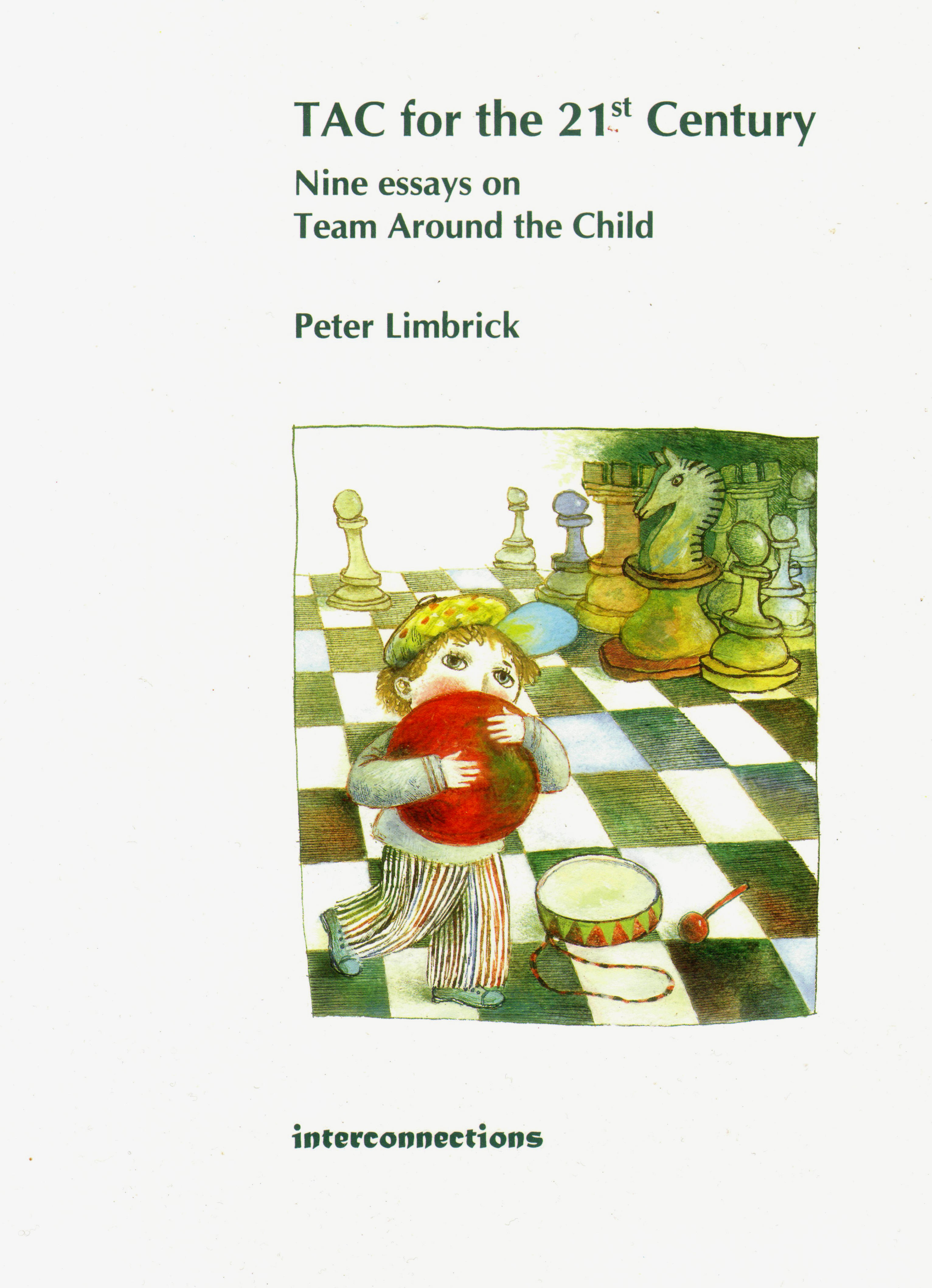TAC for the 21st Century: Nine essays on Team Around the Child. Free PDF of the whole book
By Peter Limbrick in 2009
Introduction to the essays:
Team Around the Child, variously described as a philosophy, an approach, a model or a system, and often abbreviated to TAC, became an identifiable entity when it was named as such at the beginning of this century with the publication of The Team Around The Child: Multi-agency service co-ordination for children with complex needs and their families. It was the right idea at the right time and seemed to crystallise the concerns and aspirations of very many people. For a small minority, TAC described the way they and their colleagues had always come together for a limited time around a child and family when there was a challenging situation – either an ongoing situation that had frustrated their separate efforts or a sudden crisis that called for shared action. For some practitioners, even before reading the book, the words Team Around the Child offered an immediate solution to worrying fragmentation. For very many parents it sounded like the answer to a prayer for a joined-up service. TAC has the appeal of ‘just common sense’ and many parents would expect TAC on the basis of ‘Why would my child’s practitioners not want to work together?’.
TAC was first conceived in the One Hundred Hours project (which is described in these pages) and then given birth in response to demands of multi-disciplinary practitioners, service managers and parents around the UK who could see how One Hundred Hours brought joined-up support to children and families, but could not see how to muster their own team of keyworkers in emulation of the One Hundred Hours approach. In my consultancy work with health, education and social care services in the UK and Ireland since 1995, TAC is welcomed as the most achievable system for getting each child’s practitioners to work together across agencies and disciplines. One Hundred Hours itself was informed by my teaching work since the early 1980s with children, parents and therapists in which I learned that the small collaborative team around each child brings good outcomes for child and family and provides practitioners with valued support and reassurance in their work.
TAC philosophy argues for a small collaborative team of just two or three key practitioners around each child – a team in which the parent has a full place and an equal voice. Any process which excludes or belittles parents is not TAC. Any meeting which is large and not parent and child-friendly is not TAC. Any organisation that labels traditional case conferences as TAC is cheating.
I hope you will enjoy these essays. In them you will also see how TAC has evolved into what I would want to call now the TAC system. The word system is used because in the later essays TAC is described as a logical response to adopting a systems perspective to children, to their disabilities and to their interventions.
The Essays:
- The Foundations of Team Around the Child
- Keyworkers are an essential part of a quality service for families. So why do most families not have one? Is Team Around the Child part of the solution?
- Principles and practices that define Team Around the Child
- Team Around the Child – Helping to Keep Families Strong
- Integrated Programmes and the Primary Interventionist in Early Childhood Intervention
- Team Around the Child: The small collaborative team in early childhood intervention for children and families who require ongoing multiple interventions
- The Team Around the Child approach for assessment of needs within a local multi-agency integrated pathway
- Team Around the Child in Early Support – being genuinely child and family centred
- TAC for the 21st Century: A unifying theory about children who have multifaceted disabilities
https://tacinterconnections.com/images/TAC21Cbook.pdf


